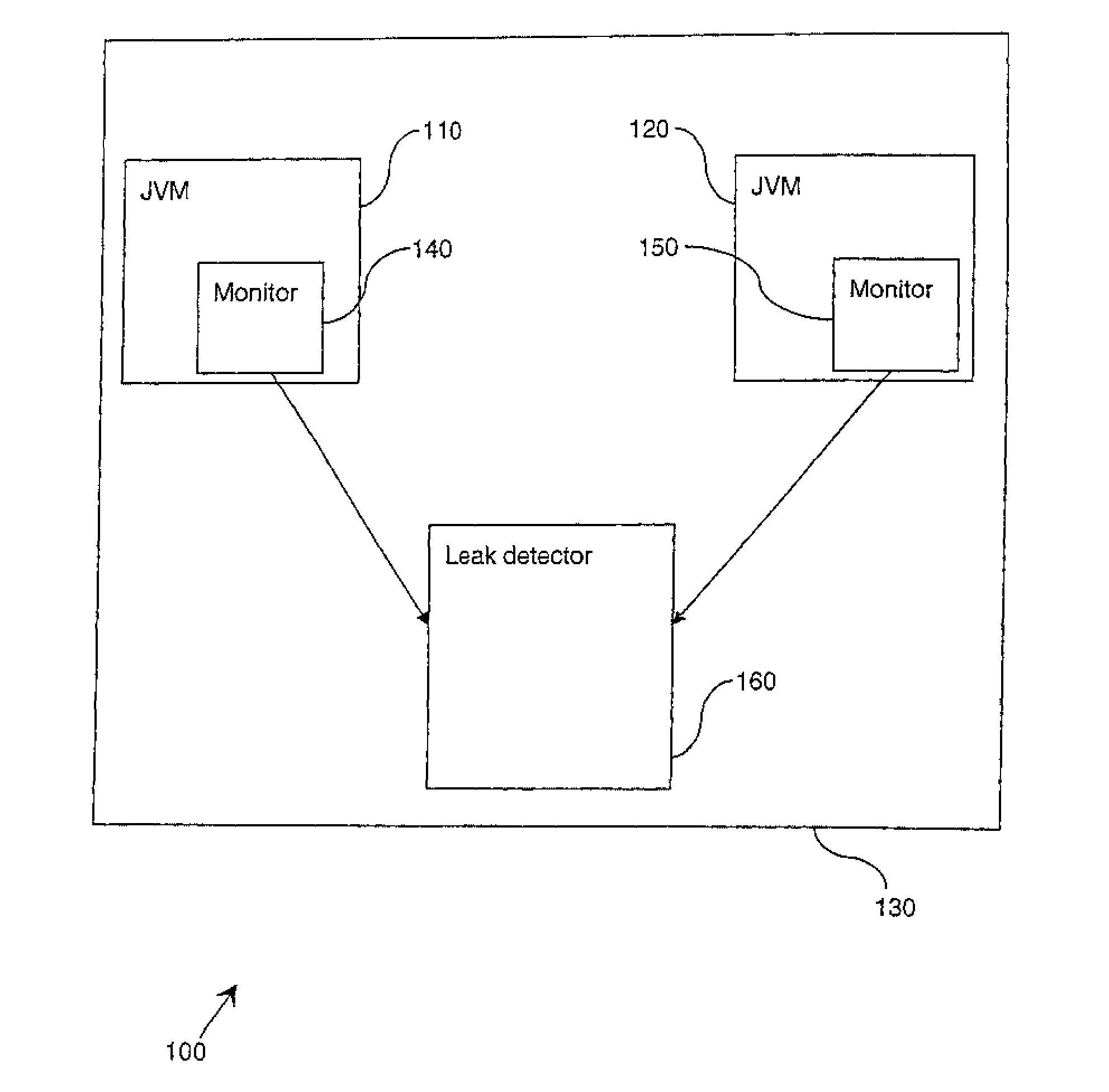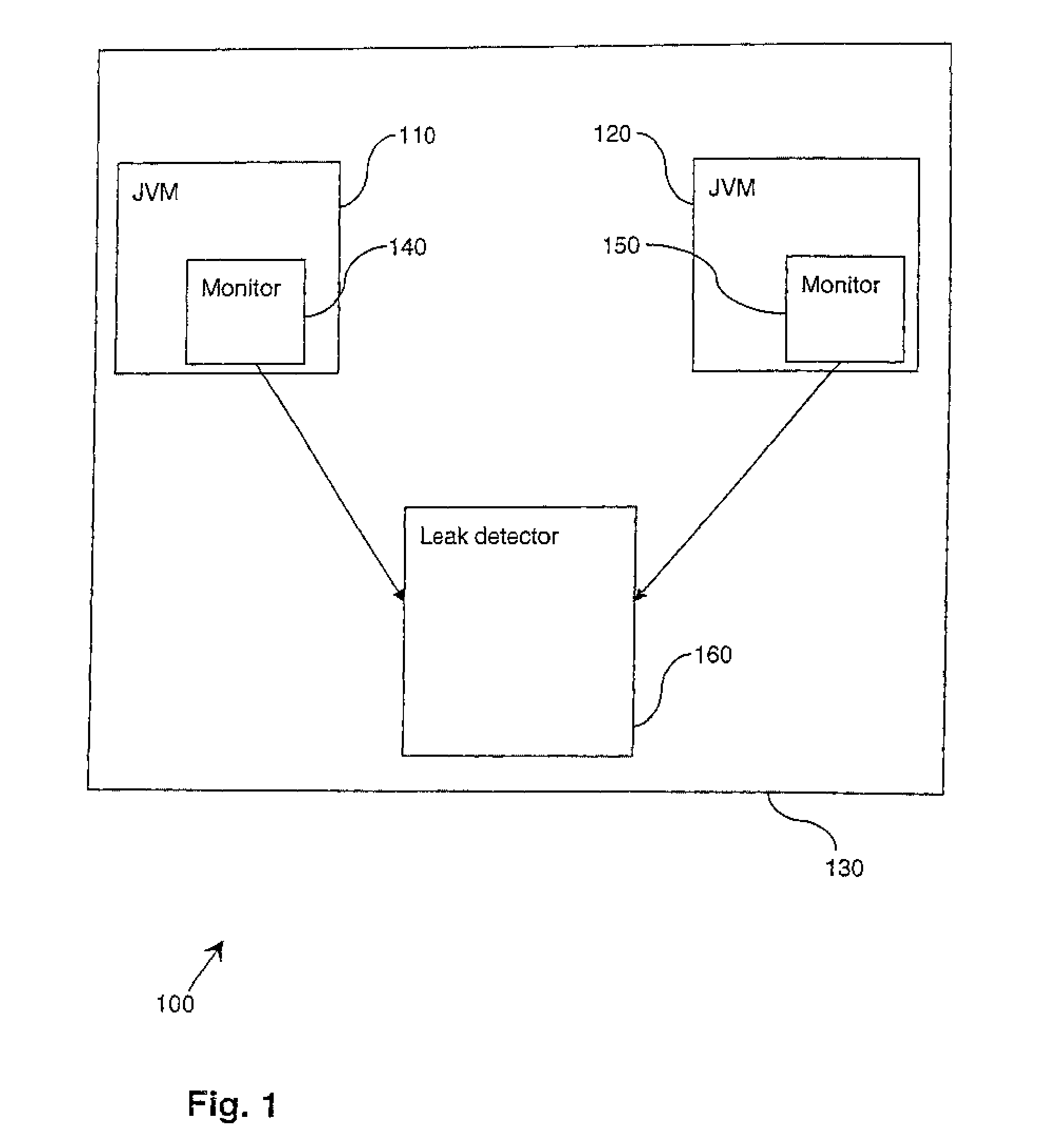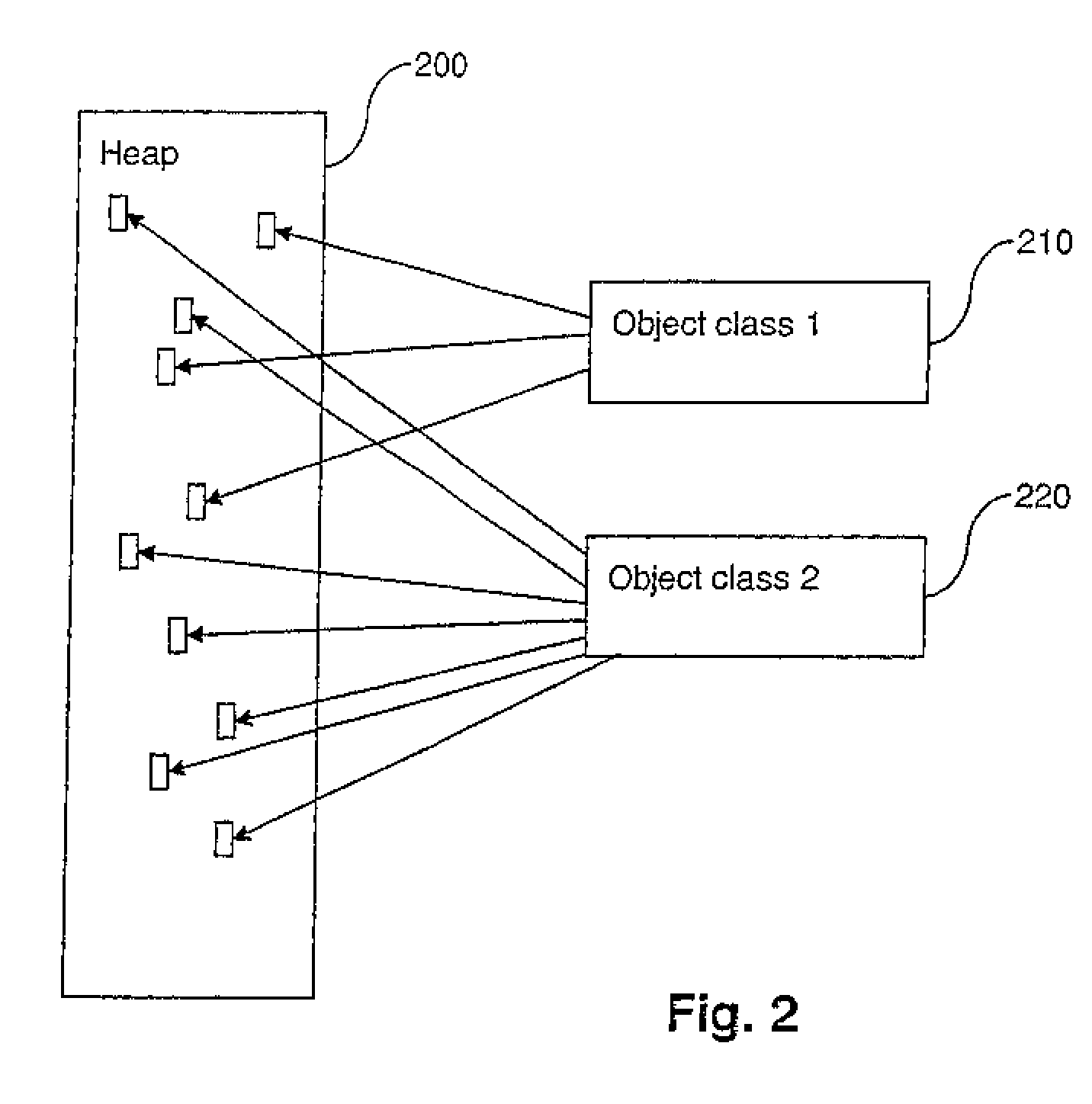Memory leak detection
a memory leak and detection technology, applied in the field of memory leak detection in computer software, can solve problems such as program failures periodically, finding cases where memory is consumed but not returned, and finding cases where memory is consumed
- Summary
- Abstract
- Description
- Claims
- Application Information
AI Technical Summary
Benefits of technology
Problems solved by technology
Method used
Image
Examples
Embodiment Construction
)
[0015]As referred to above, Java addresses the majority of memory leaks through garbage collecting unused objects using criteria such as that objects are unreferenced. However, memory leaks can still occur, such as through inadvertently leaving an unrequired Java object in a Java collection. Existing techniques to detect such leaks involve monitoring the growth of the heap and comparing snapshots of a growing heap to identify which structures (e.g., which collections) are growing. This still leaves the problem of knowing exactly where leaking objects are being allocated.
[0016]Briefly stated, and as will be explained in greater detail below, at least in its preferred embodiment the present invention is based on instead identifying the actual allocation points (known as allocation sites) of leaked objects. The allocation site is the stack trace at the point at which an object is allocated (i.e., this provides the exact sequence of method calls which resulted in the allocation of the ...
PUM
 Login to View More
Login to View More Abstract
Description
Claims
Application Information
 Login to View More
Login to View More - R&D
- Intellectual Property
- Life Sciences
- Materials
- Tech Scout
- Unparalleled Data Quality
- Higher Quality Content
- 60% Fewer Hallucinations
Browse by: Latest US Patents, China's latest patents, Technical Efficacy Thesaurus, Application Domain, Technology Topic, Popular Technical Reports.
© 2025 PatSnap. All rights reserved.Legal|Privacy policy|Modern Slavery Act Transparency Statement|Sitemap|About US| Contact US: help@patsnap.com



